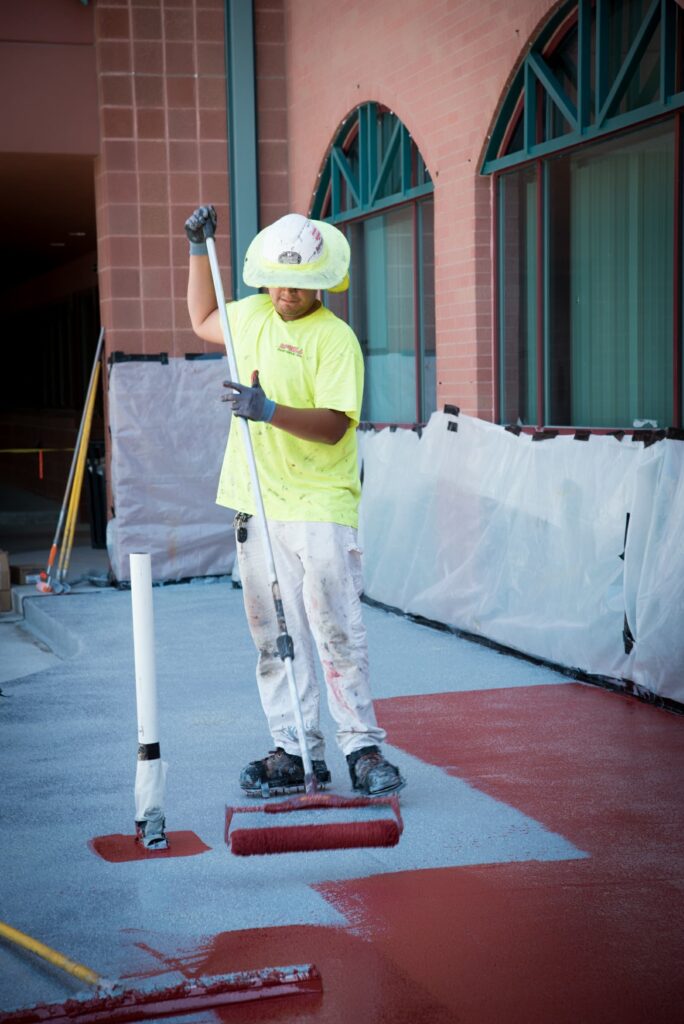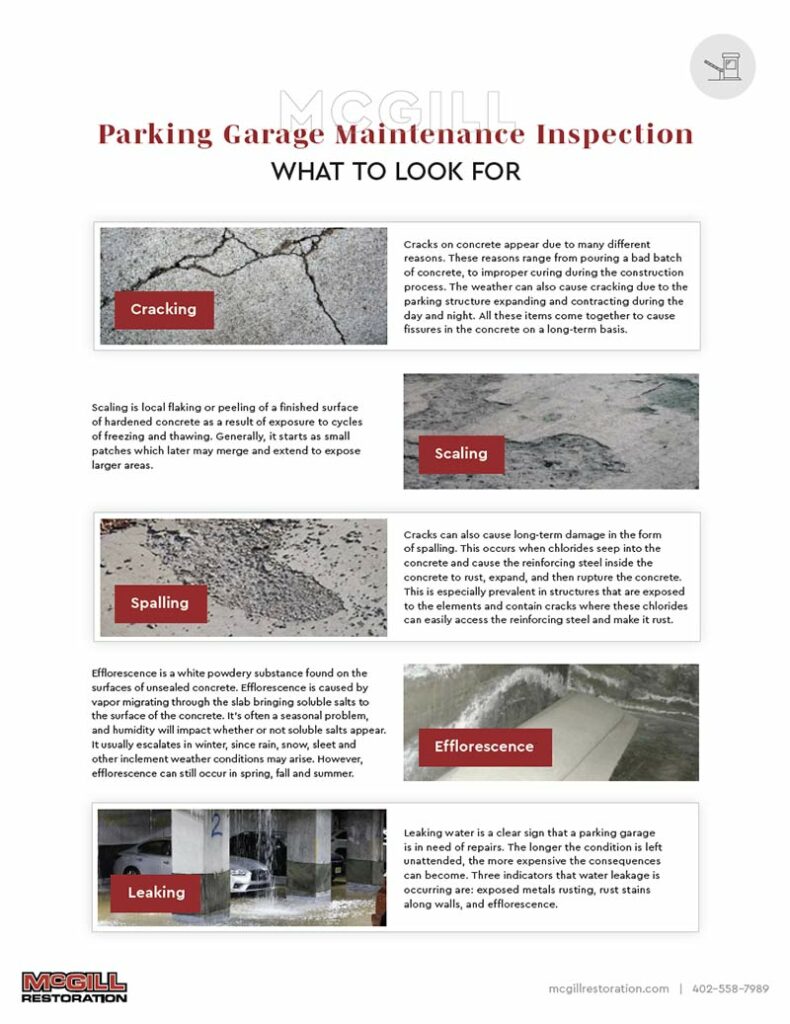Table of Contents
Industrial coatings play a major role in our infrastructure. Public works systems depend on coatings to elongate the lifespan and protect the core materials used in concrete structures, bridges, and roadways.
Uncoated concrete and steel are subject to erosion and corrosion from water, chemicals and other environmental threats, making coating invaluable for many structures and public works projects.
There’s a lot to consider when identifying the type of industrial coating best suited for the job. Equally important is having the experience necessary to apply the coating correctly for top-quality outcomes. The more familiar you are with the hows and whys, the better you’ll collaborate with your restoration expert throughout the project.
Three Primary Industrial Coating Categories
Industrial coatings come in a number of different forms but the following three categories capture the majority of applications. The overarching purpose of coatings remains consistent across each category but the chemical makeup is altered to serve specific purposes.
Standard Coatings
These are your everyday coatings that are widespread to protect concrete and steel against water intrusion and everyday chemical contact. Traffic coatings like penetrating sealers, cementitious coatings and epoxy/urethane coatings fall into this category.
A few common uses for standard coatings include:
- Parking structures
- Water tank exteriors
- Pump rooms
- Low exposure, interior industrial surfaces
- DOT high-friction surfaces
Standard coatings are common and useful across a large range of projects. Any concrete surface that needs a layer of protection is an ideal candidate for standard coatings. Epoxy and urethane work well on steel too.
NSF-Approved Coatings
Any containment system holding potable water and food contents requires special coatings that meet NSF safety standards. From community water basins to holding tanks, these coatings make it possible to protect the tanks and basins without contaminating food and water.
The chemical makeup of these coatings is customized for food and water safety. They are often epoxy-based and have the elasticity and durability to shield steel and concrete from the raw materials being held. In many cases, a standard epoxy/urethane coating system will protect the exterior of a facility while the interior receives special NSF-approved coatings.
Chemical Resistant
In some environments, corrosive chemicals have a stronger presence. Constant contact with acids and harsh chemicals calls for very durable coatings. They are often thicker at 80-120 mls and they have a chemical makeup designed to withstand abuse.
Facilities using chemical-resistant coatings include, but are not limited to:
- Acid basins
- Interior of chemical holding tanks
- Waste tanks
- Secondary containment systems
Wastewater treatment facilities, manufacturing plants and many more places require serious chemical-resistant coatings. At the Nucor Pickle House, acid was literally eating away at structural steel. We replaced the steel and added thick coatings to withstand the harsh environment and constant chemical exposure.
Waterproofing Membranes
These stand in a separate category but there is certainly some overlap in terms of purpose. Waterproofing membranes are often used on DOT projects and rail bridges but they also see some incorporation into parking structures and other facilities.
Cold Liquid Applied Membranes (CLAM) are installed over concrete and steel to create a waterproofing barrier before the final road surface is added. Hot Liquid Applied Membranes serve the same purpose with a focus on asphalt over concrete roadways.
While these applications are different from industrial coatings, some of the same equipment and surface prep techniques are used.
Special Equipment Requirements
Industrial coatings require trained crews and special equipment for the application process. Manufacturer specifications are very specific and each application is done to the exact specs. That means choosing the correct pumps, spray guns, mixing chambers and setting calibrations to mix the right ratios.
When working in open facilities, additional measures are taken for containment and dust removal. The prep work often involves shot blasting and grinding to create a perfect surface for adhesion. McGill Restoration has invested in the unique equipment and has crews trained for every application.
Monitoring and Managing Existing Industrial Coatings
Maintenance and coating renewals are extremely important when it comes to protecting structures and surfaces. When industrial coatings fail, the outside elements can quickly enter and begin corroding and eroding the underlying steel and concrete.
Choosing the right restoration and coating partner is important. Regular inspections and maintenance can address and resolve small issues before they turn into large-scale project needs. Selecting the right coatings, and installing them properly also makes a huge difference in the ability to maximize protection and longevity.
McGill Restoration has the equipment, trained crews and stellar track record to lead the way in industrial coating applications and maintenance. Get in touch to discuss your structure or facility today.



